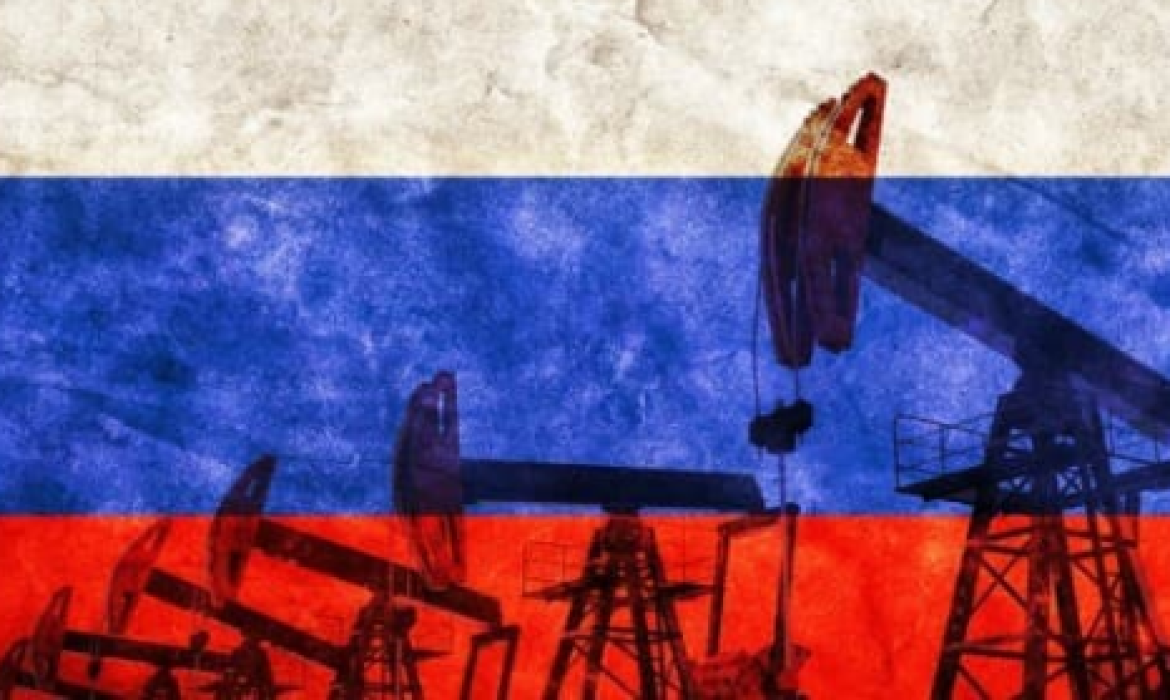
Date Issued – 19th August 2024
Courtesy of the Research Department at Balfour Capital Group
China and Saudi Arabia Lead as Top Buyers of Russia’s Fuel Oil
Amid the completion of planned maintenance at several Russian refineries, Russia increased its seaborne exports of fuel oil in July, with China and Saudi Arabia emerging as the leading purchasers of this Russian oil product, according to data from LSEG reported by Reuters on Friday. Total shipments of Russian fuel oil and vacuum gasoil (VGO) rose by 7% month-on-month in July, reaching 4 million metric tons, as per trade sources and the data. Of this volume, China and Saudi Arabia each imported 700,000 tons. Notably, exports to China surged by 18% from June, while shipments to Saudi Arabia nearly doubled compared to the previous month.
Saudi Arabia’s heightened demand for fuel oil is largely driven by its need for electricity generation during the scorching summer months when air conditioning use peaks. Additionally, a portion of these Russian fuel oil and VGO exports involved ship-to-ship transfers off the coasts of Malta and Greece, with most of these shipments destined for Asia, as indicated by the shipping data referenced by Reuters.
Following the EU and Western embargoes on Russian petroleum imports after Putin’s invasion of Ukraine, Russia has strategically shifted its seaborne crude oil and petroleum product exports towards Asia. This pivot has been accompanied by a significant increase in fuel export volumes via Africa to Asia. In fact, Russian petroleum product exports to Asia via the Cape of Good Hope nearly doubled in July, hitting an all-time high, according to LSEG shipping data cited by Reuters.
Since the end of 2023, many shipowners and vessel charterers have opted for the longer route around Africa, bypassing the Red Sea due to heightened risks from Iran-aligned Houthi attacks on Western and Israeli-flagged or owned vessels. Although Russia is not specifically targeted by the Houthis, many shipping operators are avoiding additional risks by choosing the safer route to Asia.
Russia Expands ‘Dark Fleet’ to Evade LNG Sanctions
In a strategic move to sidestep sanctions and maintain its position in the global LNG market, Russia has escalated its efforts by deploying a second vessel from its Arctic LNG 2 project. The tanker, Asya Energy, recently set sail from the sanctioned terminal in northern Russia, marking a significant step in Moscow’s ongoing attempt to circumvent Western restrictions. This vessel is part of a growing “dark fleet,” a term used to describe ships that operate under minimal transparency to evade international scrutiny.
This development mirrors the journey of the first LNG tanker from the Arctic LNG 2 project, known as the Pioneer, which was last seen navigating the Mediterranean. Both vessels are reportedly part of a fleet assembled through discreet ownership transfers, with little-known entities in Dubai’s free trade zones taking control of several ice-class LNG carriers. This tactic allows Russia to continue its LNG exports despite stringent U.S. sanctions and recent EU measures that ban new investments and transshipment operations of Russian LNG.
Russia’s expansion of this shadow fleet of LNG carriers follows a similar strategy employed with oil tankers after the invasion of Ukraine. By shifting ownership to obscure companies, primarily based in Dubai, Russia ensures these vessels can operate below the radar, making it difficult for international authorities to enforce sanctions effectively. The sanctions have particularly targeted the Arctic LNG 2 project, causing delays and restricting the use of EU territory for transshipments. In response, Russia has intensified its use of the dark fleet, betting on clandestine operations to sustain its energy exports amid a globally strong demand for LNG.
An analysis conducted by Bloomberg earlier this year revealed that at least eight vessels, including four ice-class LNG carriers, have been transferred to little-known shipping firms operating out of Dubai’s free trade zones. These ships, now part of Russia’s shadow fleet, lack listed insurers—a strong indicator of their involvement in these covert operations. With these tactics, Russia continues to defy international sanctions, ensuring its LNG reaches global markets despite increasing pressure from the West.
EU Tariffs Force China to Seek New Biodiesel Markets
Facing a significant blow from the European Union’s newly imposed anti-dumping tariffs, China is now aggressively pursuing new markets for its biodiesel and other biofuel products. The EU, which had been China’s largest buyer, implemented these duties on Friday, leaving Chinese producers scrambling to secure alternative customers, industry analysts and executives revealed to Reuters. The European Commission initiated an investigation into Chinese biodiesel products in December 2023, scrutinizing imports of hydro-treated vegetable oil (HVO) and fatty acid methyl ester (FAME) from China. As a result, the EU decided to impose provisional anti-dumping duties ranging from 12.8% to 36.4% on August 16, 2024.
This investigation was prompted by a complaint from the European Biodiesel Board (EBB), which represents European biodiesel producers. Commenting on the EU’s decision, EBB President Dickon Posnett stated, “Our European businesses have been suffering for far too long under the pressure of unfairly priced Chinese imports, and we are very happy to see the European Commission take action. As EBB, we remain determined to defend the biodiesel industry’s interests and re-establish a fair trading environment.”
In response to these tariffs, major Chinese biofuel producers are turning their focus towards the biofuel bunkering market in Asia, seeking to increase sales within the shipping industry, particularly in China and Singapore, the world’s largest marine fuel hub. This strategic pivot comes after Chinese biodiesel exports to the EU plummeted in recent months, following the EU’s investigation. In 2022, China’s biodiesel exports to the EU reached a record 1.8 million tons, with the EU accounting for a staggering 90% of all Chinese biodiesel exports. However, since the investigation began in December 2023, these exports have sharply declined. In the first half of 2024 alone, China’s biodiesel exports to the EU dropped by 51% year-over-year to just 567,440 tons, according to Chinese customs data cited by Reuters.
Now, as the EU imposes stiff tariffs, China must rapidly adapt, leveraging its biofuel capabilities to capture new opportunities in the Asian market, while navigating the broader challenges posed by the shifting landscape of global trade.
U.S. Solar Panel Makers Urge Retroactive Duties to Combat Unfair Trade
A coalition of leading U.S. solar panel manufacturers is urging the U.S. Administration to impose retroactive tariffs on low-cost imports from Vietnam and Thailand, in a bid to protect American businesses and jobs. The American Alliance for Solar Manufacturing Trade Committee, representing key industry players, has formally petitioned the U.S. Commerce Department to consider these punitive measures against the two Southeast Asian nations.
In recent months, Vietnam and Thailand have significantly ramped up their solar panel exports to the U.S., following investigations into China’s trade practices and its attempts to dodge existing tariffs by shifting production to Southeast Asia. The U.S. solar manufacturers highlighted in their complaint, as reported by Reuters, that solar imports from Vietnam and Thailand surged by 39% and 17%, respectively, in the second quarter compared to the first quarter of the year. The sharp rise in imports ahead of potential U.S. tariffs has prompted concerns that these shipments might constitute “critical circumstances,” justifying retroactive duties. The petitioners argue that these imports are undermining the U.S. solar industry, which is poised for significant growth that could drive job creation and accelerate the country’s transition to clean energy.
Earlier in April, the same group appealed to President Joe Biden to impose tariffs on solar panels imported from Cambodia, Malaysia, Thailand, and Vietnam, citing the devastating impact of low-cost imports on the domestic industry. “America’s solar manufacturing industry is on the brink of tremendous growth that will create jobs and redefine our clean energy future for decades,” the petitioners asserted. “We are calling for the enforcement of trade rules to address the harm inflicted on our domestic solar industry and to make it clear that the U.S. will not tolerate being a dumping ground for foreign solar products,” stated Tim Brightbill, co-chair of Wiley’s International Trade Practice and lead counsel for the petitioners.
In response to these growing concerns, the U.S. Administration launched a series of actions in May to safeguard U.S. solar manufacturers from China’s trade practices, which included monitoring import surges and oversupply. “Imports of solar modules from Southeast Asia, where Chinese manufacturers have been found circumventing antidumping and countervailing duties, have surged over the last year,” the White House noted.
As the debate intensifies, the outcome of these trade enforcement measures could significantly impact the future landscape of the U.S. solar industry, influencing both domestic growth and the broader global clean energy transition.
Oil Prices on Track for Weekly Gains Amid Renewed Economic Optimism
Crude oil prices are on course for a weekly rise, buoyed by a wave of optimism following the release of unexpectedly strong U.S. economic data. The market reacted positively to a robust retail sales report for July, which revealed a 1% increase—surpassing expectations of a 0.3% rise, as reported by Reuters. This rebound is particularly notable, as it follows a 0.2% decline in June. Adding to the positive sentiment was the weekly jobless claims report, which showed a decrease of 7,000 new claims for the week ending August 9, further easing concerns about a sharp economic slowdown. “The U.S. economic data released this week has helped to temper fears of a sharp slowdown in the U.S. economy,” consultancy FGE noted in comments to Reuters.
This latest data bolsters hopes that the Federal Reserve might soon consider cutting interest rates, a move that could significantly boost oil demand. However, despite these hopes, the Fed has consistently signaled caution, suggesting it won’t rush into rate cuts, which could temper some of the market’s enthusiasm. The resilience of oil benchmarks is striking, especially given the bearish factors currently weighing on the market. Concerns over weaker Chinese oil demand and recent downward revisions to global demand forecasts by both OPEC and the International Energy Agency have kept traders cautious.
Meanwhile, geopolitical tensions in the Middle East continue to support prices, with the ongoing conflict between Israel and Gaza adding an element of uncertainty. Israel has initiated ceasefire talks with international mediators, but with Hamas boycotting the discussions, the outcome remains uncertain. “Geopolitics and the risk of an expanding conflict in the Middle East are propping up prices, as the threats of retaliation continue to grow louder,” Tim Snyder, chief economist at Matador Economics, told Reuters on Thursday. As the week draws to a close, the oil market remains finely balanced between these conflicting signals, with the potential for both bullish and bearish developments in the days ahead.
Disclaimer: This article provides financial insights & developments for informational purposes only. It does not constitute financial advice or recommendations for investment decisions.




